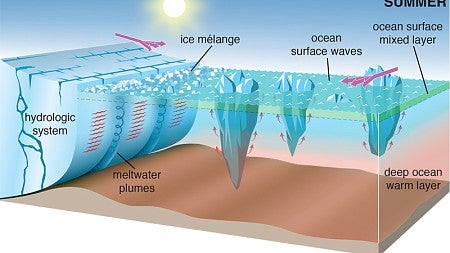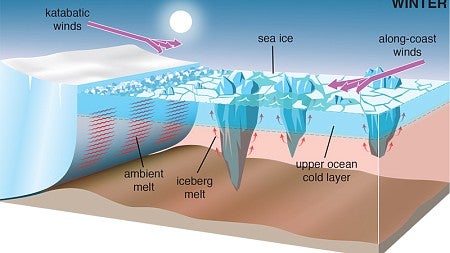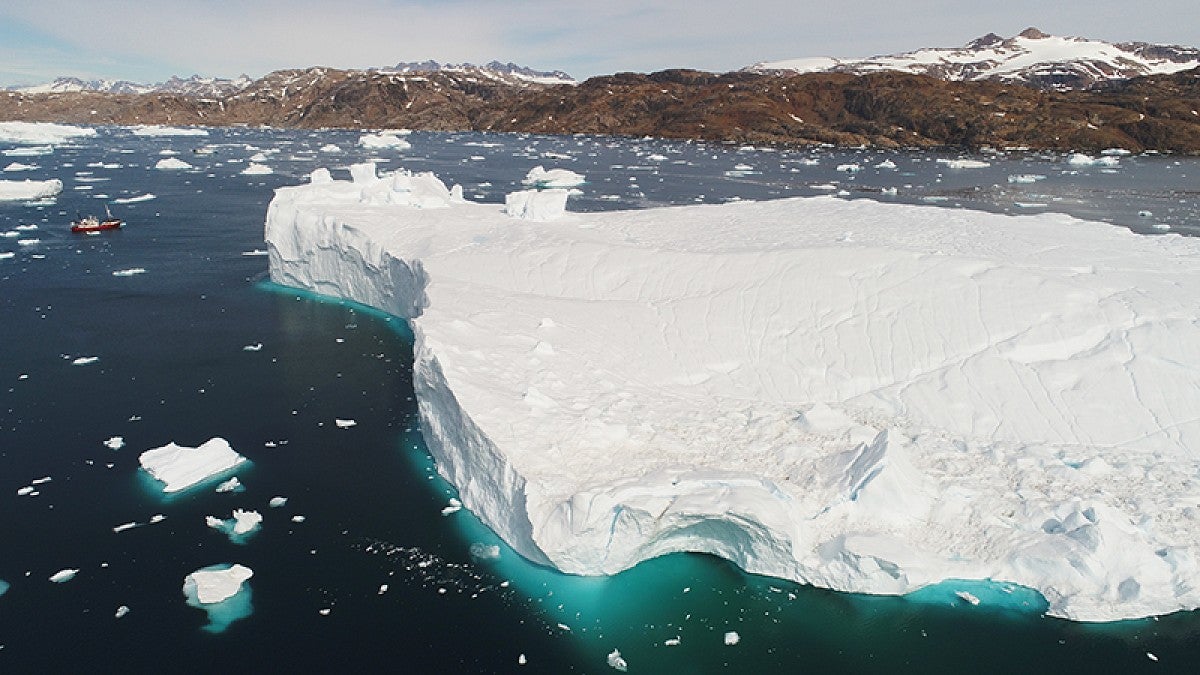Surface water conditions in Greenland’s fjords and in the northern Atlantic Ocean are dictated by what’s going on deep below the surface next to the massive Greenland Ice Sheet, UO-led research has found.
Breakaway icebergs, according to research findings appearing online Dec. 4 ahead of publication in the journal Nature Geoscience, are the biggest source of freshwater entering the ocean in key areas around Greenland. And the timing and location of meltwater are important factors that should be included in ocean modeling, report the paper’s six co-authors.


The study was conducted in Sermilik Fjord, which is fed by three glaciers in southeast Greenland, where seasonal melting conditions vary. In fjords where melting does not occur, Sutherland said, icebergs may move into currents of the North Atlantic, where they may endanger shipping lanes and offshore oil wells before they melt.
“The ultimate fate of icebergs in this larger setting can influence global climate by freshening the upper layers of the ocean,” said Sutherland, a professor in the Department of Earth Sciences and Environmental Studies Program. “There also is a need to better predict the movement of icebergs that leave the fjords.”
Iceberg melt, summer vs. winter
The two graphics, above, illustrate differences between summer and winter melting and ocean circulation. Subglacial discharge of freshwater occurs during the summer but not in winter. There is more sea ice and stronger winds at the surface in winter; in summer there are more waves and a warmer surface layer. Winter months see colder temperatures and less concentration of sunlight, which combine to reduce iceberg melt above the waterline.
In a paper published late last year in Geophysical Research Letters, Sutherland’s former doctoral student Dustin Carroll, a co-author on the new paper, reported that much of the melting from glaciers enters the ocean from underneath and rises like a volcanic plume through the salty ocean water above. Carroll is now at NASA’s Jet Propulsion Laboratory, a division of the California Institute of Technology.
RELATED LINKS
The new study combined measurements of water conditions collected midwinter and midsummer with computer modeling of five iceberg-melting processes. The results provided new details on meltwater circulation.
The study found that 68 to 78 percent of iceberg melt is released below 20 meters (65 feet) and that 40 to 100 percent of the melt, depending on seasonal conditions and locations, likely remains in a warm layer well below the surface — a finding that differs with common modeling approaches.
During summer, some of that meltwater rises and alters the saltiness, temperature and circulation of the near-surface waters in the southeast Greenland fjords. That, in turn, potentially influences glacier retreat and ice loss.
“By nature of the environment, it is very difficult to see or measure what is happening beneath the surface,” said the study’s lead author Twila Moon, a former postdoctoral researcher in Sutherland’s lab who is now at the National Snow and Ice Data Center at the University of Colorado, Boulder. “In this study, we were able to combine measurements from field work with computer simulations to look below the water surface and determine where freshwater is being created.”
The study, primarily supported by National Science Foundation grants to Moon and Sutherland, began while Moon was at the UO.
The methods used in the study “provide a framework for assessing individual freshwater sources in any tidewater system, and our results are particularly applicable to coastal regions with high solid ice discharge in Greenland,” the researchers wrote.
Under various climate-change scenarios, the researchers said, the discharge of freshwater from icebergs is expected to increase. The new findings, they said, provide a way to better interpret where and when icebergs may melt and what impacts are likely.
Co-authors on the study were Denis Felikson of the University of Texas at Austin, Laura Kehrl of the University of Washington, Seattle, and Fiamma Straneo of the Scripps Institution of Oceanography in California.
—By Jim Barlow, University Communications


